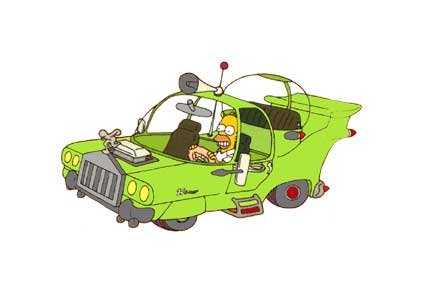ROSL103: Driven by users, designing for customers.
ROSL103: Reflections on Startup Life, Week 103

“You know that little ball you put on the aerial so you can find your car in a parking lot? That should be on every car!” — Homer Simpson, Oh Brother, Where Art Thou
Of course you’ve heard the saying “the customer is always right”. And yet, as Homer demonstrates so brilliantly in the Simpsons episode referenced above, sometimes being driven by what you’re being told by users is a total disaster!
There’s been a lot of users joining Trunk.ly over the last month that have been very vocal on what they think we should be doing. Often their advice is logical, but it also flies in the face of what we know about our existing (happy) customers.
For example we recently dropped the ability to turn off the embedded images. Every now and then we get asked “please make the ability to turn images on optional”. Often accompanied by long and thought out explanations WHY we should. It’s quite clear what will make this user happy, yet when we look at past statistics when this feature was available, actually way less than 1% of users ever turned the embedded images off. Should we be investing time in a feature that we KNOW won’t be used (much)?
It’s tempting to react by turning it on, but ultimately we know that it’s not a worthwhile effort.
Alex shared with me a story about his previous startup (Haokanbu) in which one of their big mistakes early on was confusing the first few users with their eventual customers. It is really tempting when someone loves something to think that they are the answer you need, but you also have to look at the market. In the case of Haokanbu, the challenge was that the first few users were actually part of a very small, niche market, something they didn’t realise until later.
Niche markets can look big, but you shouldn’t let yourself be blinded by the numbers — ultimately if the users you are addressing are a substantial portion of the available market, even if that’s 500,000 people (depending perhaps on your business model), you’ve got a real problem.
Whatever you do, you should be designing and building for your customers. The challenge is to make sure that you know which of your users are your customers, and which of them are distracting you from the core vision you’re trying to build for the part of your user base that cares. In my view, if users are spending a long time telling you you should be exactly like product X, they probably aren’t really your customer — you’re after the people that get the vision and will carry you forward, you just need to be sure there are enough of them.
Ultimately Homer’s problem (well Powell Motors problem) was that Homer was never a customer — he was a user let loose in the candy shop, but when it came to it, he’d never have paid for the car he designed, and nor would anyone else.
Let your users challenge you and learn from them, but make sure you design for your customers.
